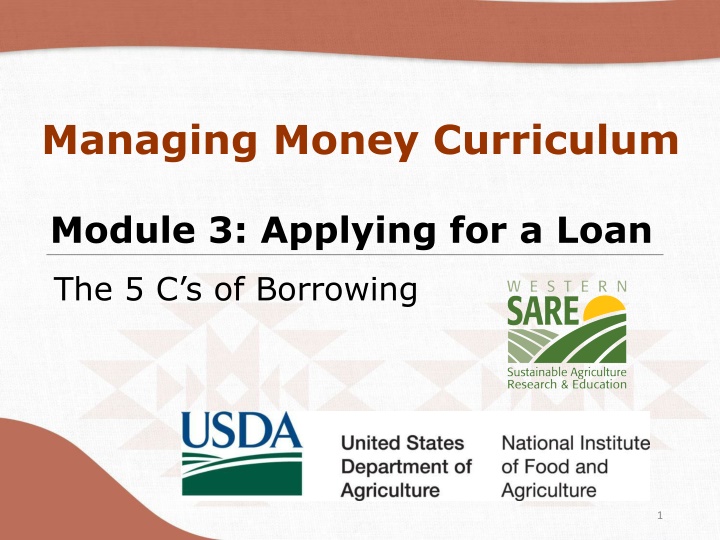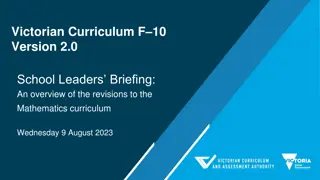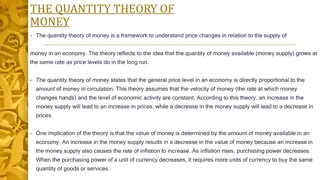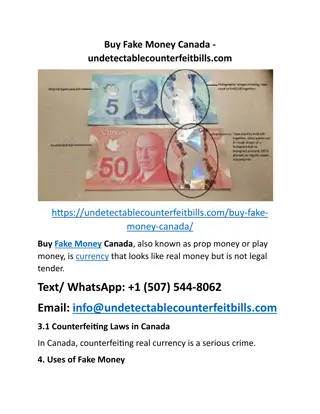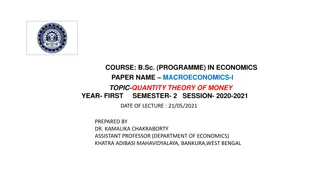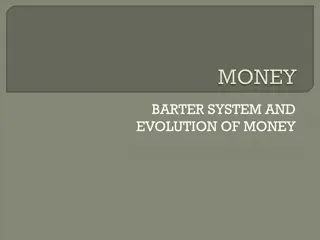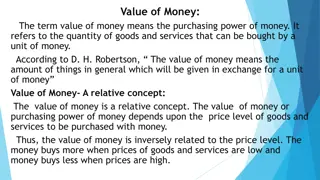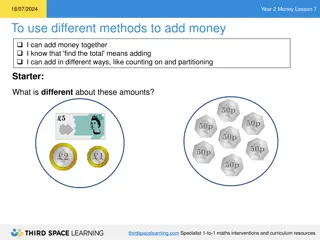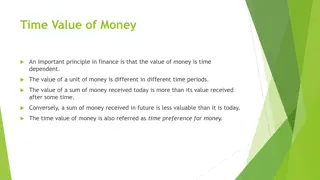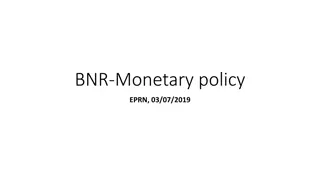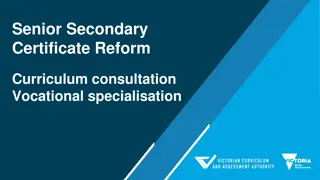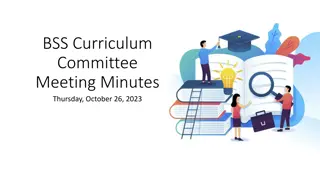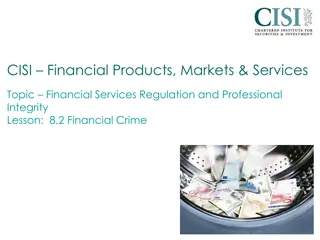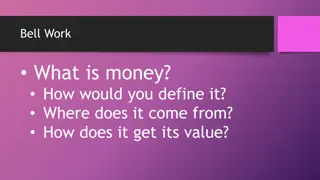Managing Money Curriculum
This curriculum module delves into the essential aspects of applying for a loan, focusing on the 5 Cs of borrowing: character, capacity, capital, conditions, and collateral. It explores what lenders seek in borrowers, sources of money, and factors to consider before acquiring a loan. Key concepts include the process of acquiring a loan, what banks look for in borrowers, and understanding the terms and conditions associated with borrowing money.
Download Presentation

Please find below an Image/Link to download the presentation.
The content on the website is provided AS IS for your information and personal use only. It may not be sold, licensed, or shared on other websites without obtaining consent from the author.If you encounter any issues during the download, it is possible that the publisher has removed the file from their server.
You are allowed to download the files provided on this website for personal or commercial use, subject to the condition that they are used lawfully. All files are the property of their respective owners.
The content on the website is provided AS IS for your information and personal use only. It may not be sold, licensed, or shared on other websites without obtaining consent from the author.
E N D
Presentation Transcript
Managing Money Curriculum Module 3: Applying for a Loan The 5 C s of Borrowing 1
Project Team: Ruby Ward, Professor, Utah State University Trent Teegerstrom, Associate Director of Tribal Extension, University of Arizona Karli Salisbury, Research Associate, Utah State University Kynda Curtis, Professor, Utah State University Staci Emm, Extension Educator and Professor, University of Nevada Reno Carol Bishop, Extension Educator and Associate Professor, University of Nevada Reno Acknowledgments: Vicki Hebb, reviewing content, and Russ Tronstad and Stuart Nakamoto, content. This material is based upon work that is supported by the National Institute of Food and Agriculture, U.S. Department of Agriculture, under award number 2013-38640-22175 through the Western Sustainable Agriculture Research and Education program under subaward number EW14-017. USDA is an equal opportunity employer and service provider. Any opinions, findings, conclusions, or recommendations expressed in this publication are those of the author(s) and do not necessarily reflect the view of the U.S. Department of Agriculture. 2 Each university is an affirmative action/equal opportunity institution
Key Concepts What lenders look for in a borrower Process of acquiring a loan or money 5 C s ofborrowing 3
What Banks and Lenders Look for in a Borrower When seeking credit/loans for various sources, the lender wants to know the chances that you will repay the loan. Recall Module 2 and the impact of interest rates on borrowed money. Where do you rate? The more risk or uncertainty about the borrower, the higher the rates and terms of the loans/money. 4
Sources of Money Where you get the loan/money has an impact on the rate and terms of the funds: Family & Friends Banks and Credits Unions Pay Day Loans Internet: Crowd Funding Each of these options have pluses and minuses associated with the loans/money. 5
Before Acquiring the Loan/Money Know the Terms Look carefully at the terms of the funds before accepting: Repayment time: Start date for repayment and end of loan Type and rate of the interest charges: Compounding daily, monthly, billing cycle, or annual Variable or fixed rates: 4% to 75% Late fees and penalties, early payoff fees What is listed or required for collateral? What does the bank take from you if you do not repay the loan? 6
Requirements of Acquiring the Loan/Money Each sources will require different information and have different requirements: Application form (see examples in resources) Bank/credit card/utility statements (1-3 month history) Pay stubs (proof of income) Tax returns (proof of income) Individual to co-sign (depends on type, amount, and length of agreement) Collateral: titles for property Cash Flow 7
Why do you have to gather all of the personal information? Lenders want to know if you will be capable of paying back the loan 8
Credit Factors 5 C s of Borrowing Capacity Ability to repay the loan Capital/Cash Personal money that you have or have invested in the business Collateral Assets you are willing to use as repayment in case you cannot repay the loan Conditions (loan) What is the money going to be used for? What are the overall economic conditions? Character The general impression you make on the lender 9
Capacity The ability to repay the loan Primary source of repayment Potential cash flow from other resources Projections a forecast of the business financial standing Payment history Makeup of household Debt to income ratio Percent of your gross income that is paid towards your debts 10
Capital Money invested in the business Owner s Equity The amount of personal money that has been invested into your business Makeup of Assets Property, buildings, and equipment Liquidity of Assets How easily assets can be converted to cash Availability of Assets 11
Collateral Assets that can be used as an alternative repayment if you can t repay the loan Quality Condition/value of asset New car vs. old car Marketability How easily you can sell it Availability How moveable it is Assignability Transfer of ownership from one party to another after the loan is repaid Tangibility Is it a physical asset like a vehicle? Rating (Overall) 12
Collateral Offered or Available as a Security Measure Determining collateral requirements Ability of borrower Type of work Creditor risk Methods of evaluation of collateral Property to include in lien Source of liquidation Secondary collateral Description of property taken as collateral Accurate Legal 13
Conditions Additional information that can influence the lender s approval of a loan Current market conditions Within yourindustry Localmarket conditions Loan structure Feasibility Physical limitation Sensibility of loan usage Business management capabilities Element of risk 14
Character Moral qualities that distinguish the borrower Willingness to repay Ability to repay Integrity Persistence Community acceptance/reputation Flexibility of individual Background knowledge 15
The Borrower Moral Responsibility Unpaid bills or judgements Complete and correct financial statements Inaccurate or false production or sales data Bankruptcy or compromise of debts Ability Age Health Continuity of Management Time on present property; owner or renter? 16
Financial Position and Progress Assets Cash on hand Farm products on hand Farm real estate Liabilities Amount & number of debts When & why incurred? Secure or not? Real estate: first liens, second liens Total Liabilities; effects of payments Net Worth Financial trends 17
Purpose of Loan & Basis of Approval Analysis of loan purposes: Necessities operation, living costs Needs taxes, interest, repairs Wants non-essentials Determination of loanamount Method of disbursement Split line of credit A loan split into a personal line of credit and a business line of credit Plan for repayment 18
Money Management Review Module 1 Record Keeping: Keep track of your cash flows A good set of financial records will help you build a budget and make better financial choices Module 2 Loans and Credit Cards: Use the MyFi app to become more savvy about credit card usage Build a budget that will help you become independent form credit cards Module 3 5 C s of Borrowing: Know what a lender looks for in a borrower Knowing the factors for loan approval will give you an advantage for a loan with a good rate 19
Next Module: Money Management Module 4: Credit Scores Will cover all the components of a credit score and what that means to you as a borrower. Will cover what a GOOD credit score is and how to increase your credit score. The difference between having a good credit score and a bad credit score could save you hundreds when applying for a loan. 20
Long-Term Assignment: Keep Track of Your Budgeting Exercise Questions? 21
Thank you! 22
